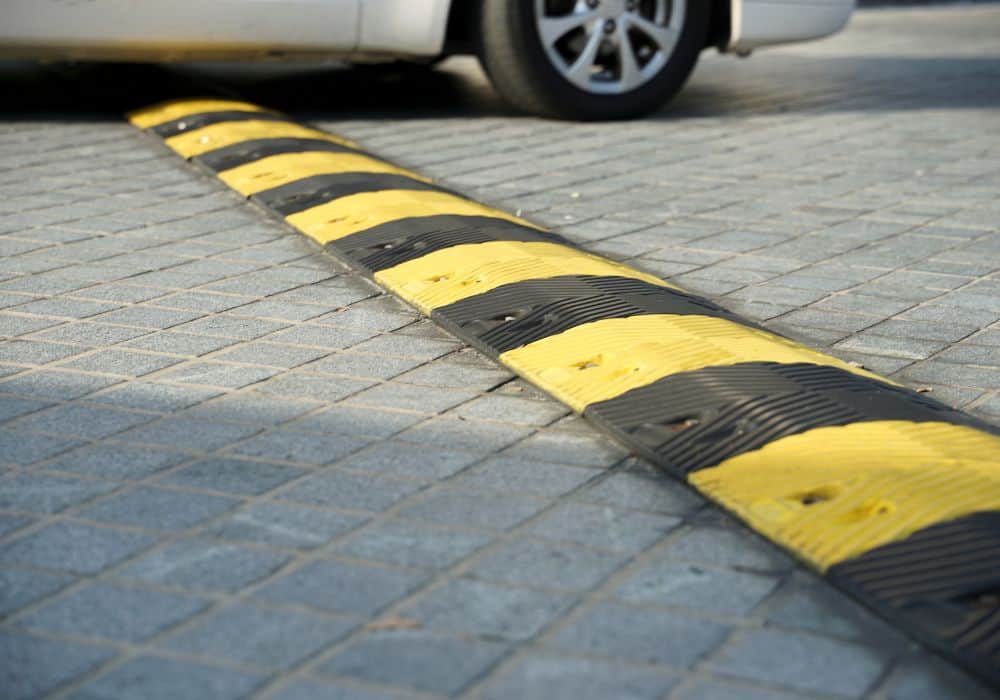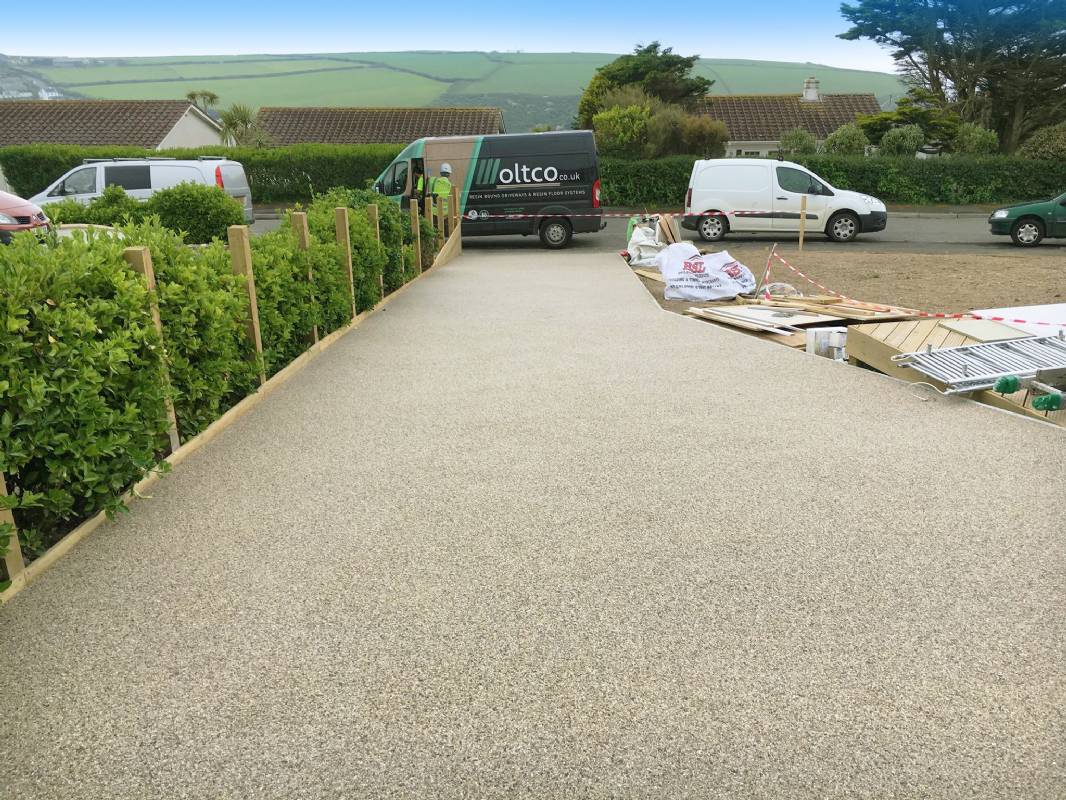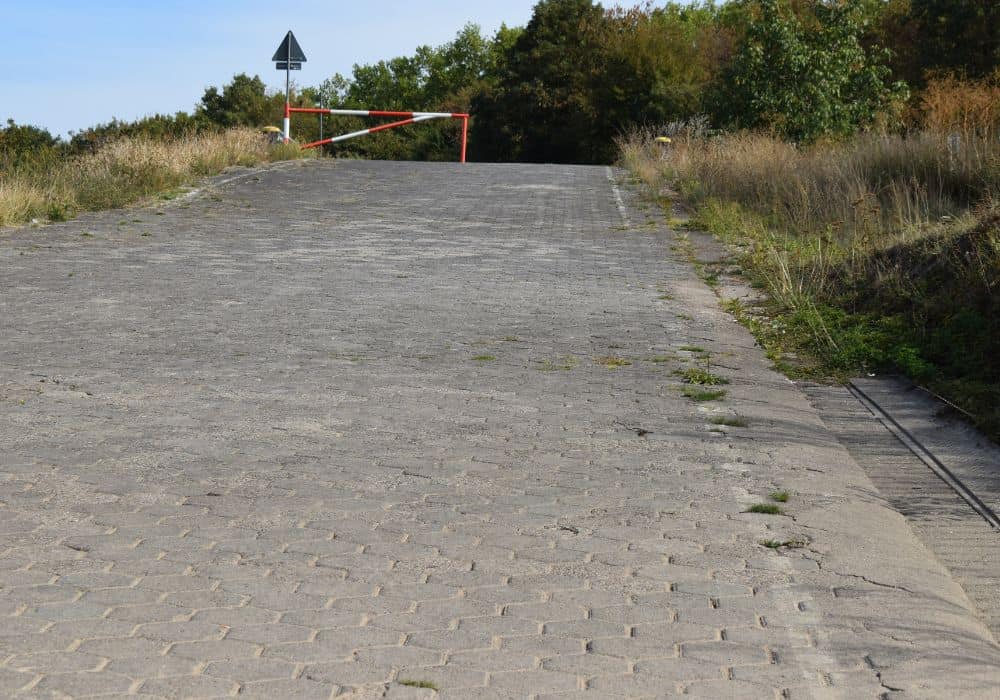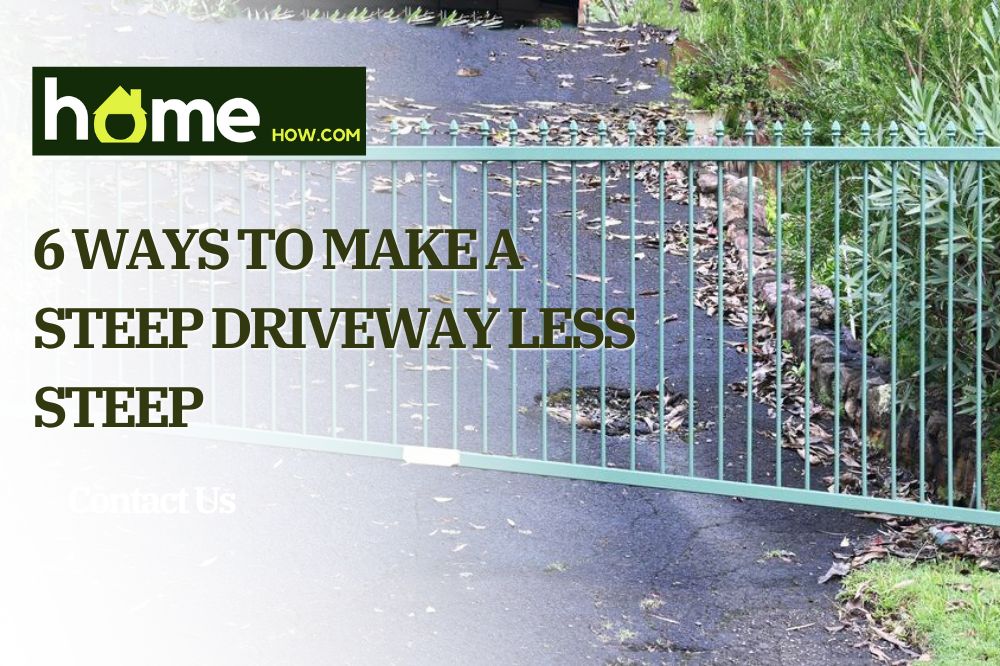Are you tired of scraping the bottom of your car on your driveway? Especially if you have a low-lying vehicle, having a steep driveway can be a nightmare for your and your car’s front bumper.
Unfortunately, not all houses come with a flat driveway, which is a problem many people deal with. A steep driveway can be quite an inconvenience; it makes backing out a bit more challenging, and it can get very slippery during rainy days and winter.
What To Do With A Steep Driveway?
1. Install Speed Bumps

If you have a larger budget for dealing with this problem, you might want to install speed bumps, which will mellow your driveway.
Nobody likes to drive on a steep incline or decline. Hence, a speed bump is an excellent solution because it will ultimately slow the car if it slides down the driveway, minimizing potential damage.
Generally, speed bumps slow down the traffic to 2-10 mph and are highly useful for areas where drivers and pedestrians share space.
Therefore, consider adding speed bumps if you want to prevent potential accidents and make the area safer for other car owners or your friends who might want to use your driveway.
As mentioned, it is a bit expensive solution and might cost you from $1,000 to $1,500 per speed bump, depending on your region, particular driveway, and the type of project.
Generally, the ideal solution is concrete speed bumps, but their installation is very costly, ranging from $4,000 to $30,000. If you do not wish to spend that much money, you can opt for asphalt speed bumps.
Regardless, if you are seriously thinking about installing speed bumps, you should hire a professional to provide you with a price quote for this project, so you know what you got yourself into and what budget you need.
In any case, it is cheaper than re-doing your driveway, so you will have to weigh your options.
2. Add Gravel or Sand
Adding sand or gravel to your driveway is one of the cheapest solutions you can pick. However, it depends on the type of your driveway and how steep it is-unfortunately, not every steep driveway can be fixed with gravel.
Why is it a good solution? First, a layer of sand or gravel will build it up and possibly even out the driveway. Also, gravel and sand increase traction between the road and the car, meaning it will not just slide off that easily. It is also more cost-effective than a pebble.
A gravel driveway is not that easy on the eye; a paved driveway is obviously a more aesthetically pleasing solution. Still, it will eliminate this problem for you for a fraction of the price compared to other solutions.
However, there is a possibility that you will have to remove your current driveway material before you start adding gravel.
The use of gravel for this purpose has some downsides: sloped gravel driveways are highly susceptible to erosion and, over time, will slide to the bottom of the slope. This means you might have to replenish it.
On the other hand, if your primary problem is a slippery slope and not car damage, it will probably work for you. Another substitution for gravel would be asphalt- it is cost-effective and will give you an excellent texture, making it a popular choice.
However, asphalt will cost you more than just adding gravel. If you want a more permanent solution, consider installing asphalt to even out your driveway and increase friction.
3. Gap Ramp
Installing a gap ramp, regular ramp, or curb ramp is also an inexpensive idea for your steep driveway that will prevent your car from potentially hitting the curb. It also provides your vehicle with a smooth transition onto the street and can prevent a dip from causing your car damage.
This is done by adding concrete at the base of the driveway. If this is expensive for you, consider pre-made ramps.
There is a number of pre-made ramps that you can buy; they usually cost around a couple of hundred dollars. Gap ramps typically cost around $150, but you can probably find cheaper ones; rubber gap ramps generally sell for around $50, while concrete gaps are about $250.
If you want to install the curb ramp yourself, here is how you can do it using a driveway ramp install kit, trowel, and a paintbrush/roller.
- Prep and clean the area you want to install the ramp,
- Tape off the upper and lower with painters to create straight edges, and apply adhesive to the area you taped off with a brush or roller
- Lay a PVC pipe at least 1-inch underneath to facilitate water drainage and prevent gutter blockage
- Mix the curb ramp material with the enclosed adhesive using a trowel until the mixture is even.
- Spread the mixture to fill the curb at the 20-25 degree incline over 10 to 12 inches to bridge the gap between your driveway entrance and your street
- Slope it at the end to allow entry from every direction
- The last step is to shape and compress the applied mixture by using a trowel.
- Let it dry for 24 hours.
You can fortify the ramp using concrete to handle heavy traffic without moving if you wish.
Considering that some municipalities have strict rules about the installment of gap ramps, consult with a professional in the area or a city planner before starting this project.
4. Add Curves or Barriers
Adding curves will not flatten your driveway, but it will help reduce the driveway’s incline and possibly increase the value of your property. In addition, curved driveway function and look better, adding to your house’s curb appeal.
Curves break the steepness and allow you to climb and descend your driveway without hassle.
Similarly to curves, barriers will not do much for your driveway’s incline but will make it more manageable. Again, there are various barriers that you can buy for $300, and it is a reasonably cheap solution if you do not have to ‘cover’ your driveway with them.
You place the barrier at the most critically or steep area of your driveway.
5. Resin Driveway

Consider a resin driveway surface if your driveway is too steep to pave asphalt. These types of driveways are best for sloped drives, and resin as a material has numerous advantages compared to gravel, for example.
It is permeable, meaning the water will naturally go through it, and it is non-slippery and gives your tires extra grip compared to pavement. If you live in a colder environment, your car can slide off your driveway and cause a car accident due to the ice on your driveway.
You can also employ various de-icers and salt to deal with this problem, but they can damage your driveway surface, causing it to crack.
Generally, the resin-bound driveway is the best solution for very steep driveways, especially if there is no way that the incline can be reduced using curves, speed bumps, or gravel.
Furthermore, it will give your driveway an elegant finish, especially if professionals do it.
Putting the resin surface includes covering the area with sand and gravel and applying a layer of decomposed granite, then resin. However, even though it might sound like a simple task, we suggest you hire a professional team of people for this project.
Regarding the price, installing a resin driveway will cost you around $5 to $10 per square foot, but you should check with the professional to get an exact price.
6. Regrade Your Driveway
This is probably the option nobody wants to hear about because it is the most expensive and extreme solution. However, if you are a new homeowner who recently put in a new driveway, you might think this is a crazy idea.
But if all the other options are not working for you, you ought to consider it, especially if you have already had a couple of car accidents or often deal with damage to your car’s front bumper.
Re-grading is not a DIY job, and you should contact professionals who will install a customized driveway. The cost of re-grading your driveway ranges from $400 to $5,000, and it involves removing your current driveway, putting in filler soil, and repaving.
How steep should a driveway be?

Well, the best driveway is the flat driveway, but for many, that is not an option, so let’s check what studies show regarding the steepness of your driveway.
Driveways should not exceed an incline higher than 15 feet for every 100 feet of length; in other words, not more than 15 percent grade.
Depending on where you live and your city/municipality guidelines, everything above 25 percent incline is considered a slipping hazard and a potential danger.
Interestingly, the insurance company might hold you liable if someone damages your car on your steep driveway.
Conclusion
There are many ways to make your steep driveways less steep: installing ramps and speed bumps, adding gravel, sand, barriers, curves, and resin surface, and ultimately re-doing your driveway.
The best option for you depends on the type of problem you have with your driveway and how much of a budget you have to cover it. As always, you should contact a professional who will provide the necessary information.
Do you have a steep driveway? How do you plan to fix it? Please share your experience with us, and as always, do not hesitate to ask any
